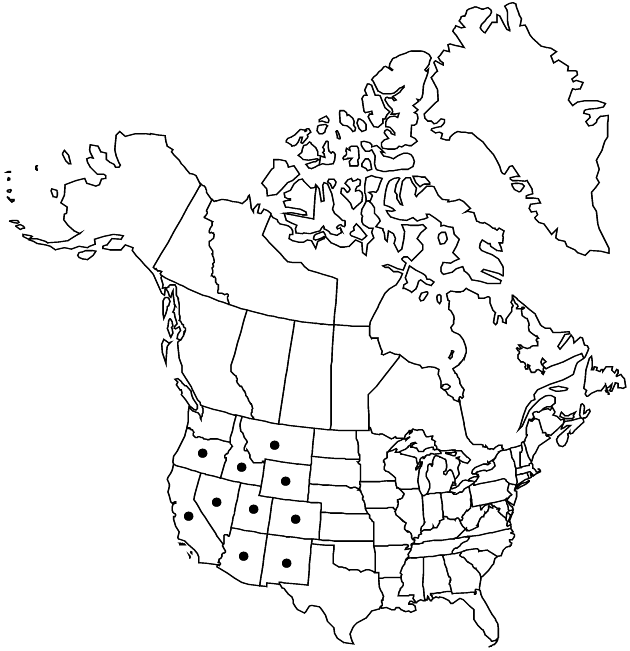Ericameria nauseosa var. oreophila
Phytologia 78: 64. 1995.
Plants 70–250 cm. Stems greenish, usually leafy, compactly tomentose. Leaves yellowish green; blades 1-nerved, filiform to linear, 20–50 × 0.8–1 mm, faces glabrate. Involucres 6.5–10 mm. Phyllaries 11–20, apices erect, acute, glabrous. Corollas 6–9 mm, tubes glabrous, lobes 1.5–2.5 mm, glabrous; style appendages shorter than or equaling stigmatic portions. Cypselae hairy (sometimes glabrous in Idaho populations); pappi 4.2–7.6 mm. 2n = 18 (as Chrysothamnus nauseosus subsp. consimilis).
Phenology: Flowering late summer–fall.
Habitat: Alkaline valleys and plains
Elevation: 1200–3000 m
Distribution

Ariz., Calif., Colo., Idaho, Mont., Nev., N.Mex., Oreg., Utah, Wyo., Mexico (Baja California).
Discussion
The names Chrysothamnus nauseosus subsp. consimilis and var. consimilis (Ericameria nauseosa subsp. consimilis) have been used for this taxon; an equivalent combination has not been made at the varietal level in Ericameria. Variety oreophila intergrades with vars. mohavensis and speciosa.
Selected References
None.